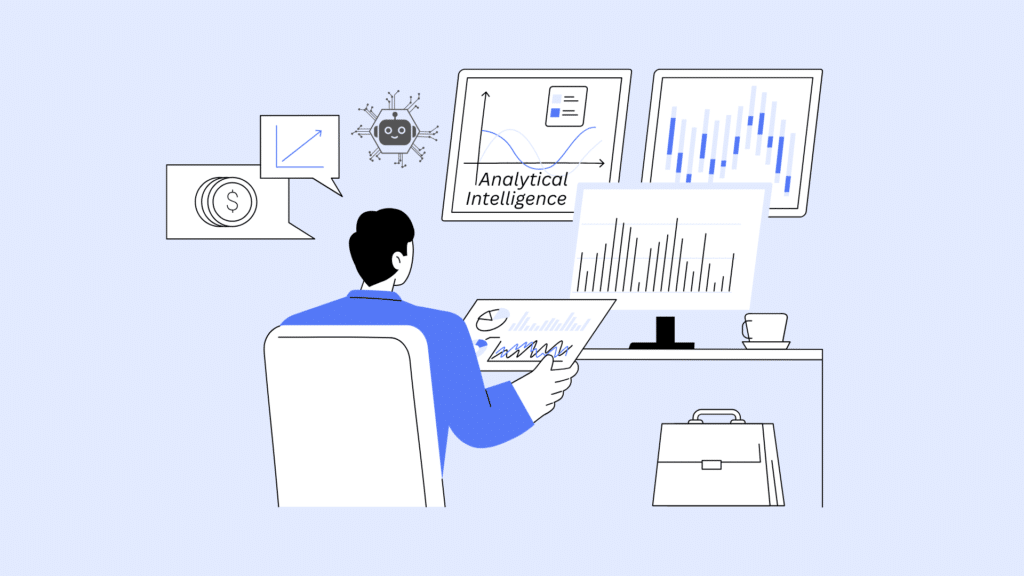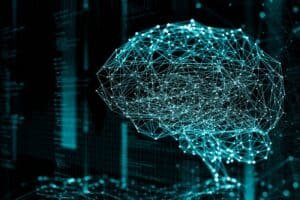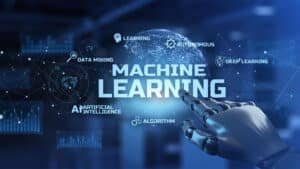Ever since businesses recognized the value of data for growth, companies have been utilizing analytics and other quantitative measures, such as statistics, to make informed decisions. In 2025, artificial intelligence holds significant power to empower organizations with data and analysis.
Both analytical intelligence and AI are important methods for organizations to utilize a large amount of data, understand it, and take measures to boost organizational capabilities. But many still believe that it’s an either-or situation. Whereas, the power of analytics can go way beyond with the addition of artificial intelligence. These trends are not competing against each other; they can be highly beneficial when used in synchronization. To put it in simple terms, AI can be an extension of analytical intelligence initiatives of an organization.
What’s Analytical Intelligence?

Analytical intelligence leverages data, often a large amount, uses advanced technology, analysis tools, and statistics to offer information or actionable solutions. It is widely used in various industries like finance, business, healthcare, and IT to analyze complex problems and provide scalable resolutions. It has been used in organizations for over 40 years, and from the beginning to now, analytical intelligence has evolved frantically.
In From Analytics to Artificial Intelligence by Thomas Davenport, we can see that the author has defined 4 eras of analytical intelligence:
- Analytics 1.0: The era of business intelligence, introduction of analytical tools, and data management.
- Analytics 2.0: The era of big data analytics that paved the way for data scientists.
- Analytics 3.0: The era of data economic analytics. During this time, organizations utilize analytics alongside numerous machine-learning models.
- Analytics 4.0 (Now): The era of artificial intelligence (AI) or cognitive technologies.
Top 5 Barriers to Analytical Intelligence
Analytical intelligence can provide analysis models, data, and solutions. But, utilizing these solutions across departments and in a mass way can be a great challenge for most organizations. Thus, it can give rise to barriers like:
- Increase in manual labour, both intellectual and physical. Without combining analytics and AI, enterprises can waste time on mundane tasks that can be easily automated, increase the chances of error and inefficiencies, and experience a decrease in overall productivity.
- The culture of ‘one-size-fits-all’ marketing needs to be over now. Customers are evolving and are smarter when it comes to investing in products and services. They do not care about marketing trends that are not curated just for them. With time becoming more and more ‘expensive’, your customers will not waste theirs on boring marketing strategies that are not analytics-based and tailored accordingly.
- Through analytical intelligence, companies have huge data and solutions at their fingertips. More importantly, they need to know what to do with them exactly to increase brand awareness, devise marketing plans, and engage & retain customers. Many businesses are still unaware of the world of possibilities that awaits them by enabling analytics and AI in their external business processes.
- Having a basic automated and static workflow-based internal business process will slow your entrepreneurial growth by hindering productivity, decision-making, and advancement. Even handling the tiniest amount of data manually will become prone to errors, time-consuming, and labour-intensive.
- Organizations without AI-based talent analytics are sure to fall behind their competitors. There will be increased misalignment between what the organization needs and what its workforce can provide, leading to less agility in innovation & handling of tasks and higher costs to either recruit newer people or reverse manual mistakes. These factors will ultimately make the organization fall behind the technological and market demands.
How Artificial Intelligence Breaks Down Each Barrier?

Here are some core areas where organizations can leverage AI to improve their products & services, performance, and optimize various processes. These tasks were previously done using analytical intelligence, but today, using artificial intelligence in combination with analytics can be revolutionary.
Improving Products & Services
Previously (before the advent of AI), companies used analytical strategies and methodologies to improve their products and services. This can now be done using AI, be it online or physical products and services. Industries can use sensor data and machine learning analysis to enhance their products. With the combination of analytical and artificial intelligence, consumer-based products like electronics, automobiles, and even toothbrushes can be made modern and smart.
As per Deloitte’s 2017 & 2018 surveys, incorporating artificial intelligence into products and services was one of the primary focuses of large-scale US enterprises. Companies can also use predictive or prescriptive analytics in existing products to make them more contemporary. AI can also jump in to increase and maintain automation and refinement of these improved models.
Upgrading Internal Business Processes
Analytics has already positively impacted business processes for years now. Introducing AI will only extend the benefits of upgrading internal business processes in various industries. In the CEO Letter To Shareholders, Jeff Bezos mentions that Amazon uses AI extensively, from leveraging it in distribution centers to optimally filling delivery trucks. No wonder Amazon collected approximately 638 billion US dollars in net sales revenue globally in 2024, as per Statista!
In today’s competitive marketplace, businesses can also incorporate machine learning (ML) to improve their speed and accuracy in decision-making. For example, they can develop detailed propensity models. This can help in two ways:
- Understanding customer tendencies and developing products/ services accordingly,
and
- Sharing the report with the sales team to make them decide the target audience for these products & services.
Enhancing External Business Processes
Businesses can use analytics and AI to improve external business processes like online operations, marketing, sales, and customer service. These technologies can be incorporated by both digitally savvy and traditional enterprises. AI is extensively used today to map out customer behaviours and buying patterns. It can also be used to judge the results of a marketing campaign on social media channels. These results, when combined with proprietary customer data from the website, CRM, etc., can predict sales, drive suitable marketing campaign ideas to boost customer engagement and retention.
Companies like Google and Amazon have redesigned their entire marketing strategies by focusing on both analytics and AI. They have introduced AI assistants and chatbots, like Google’s Alexa, Google Home, and Amazon’s Echo, to increase personalized products that modern customers are grabbing like hotcakes!
Driving Analytics Capability
In 2025, many organizations globally are facing a huge problem: a talent gap! There is a significant shortage of skilled analysts and data scientists that all small, middle, and even large-scale organizations are facing. AI can be a sign of relief, as by incorporating AI, organizations can automate tasks and increase data security.
The scope of AI in traditional analytics data flow assignments like data cleansing and ingestion is immense. With this, skilled workforce like data scientists can focus on vital projects that require human intelligence. Automated ML systems can also increase data scientists’ efficiency and improve analytics in model development and deployment.
Many specialized cloud vendors are packaging numerous analytics and AI technologies as services for organizational use. In this way, enterprises can leverage these revolutionary technologies without needing any additional expertise or sky-high expenditures.
Conclusion: Building an AI-Empowered Analytical Culture
Artificial intelligence is based on analytics at its core. Organizations that do not have technological capabilities like tech giants Amazon, Google, or Microsoft, need to plan comprehensively for AI deployment. This will require both establishing an internal talent ecosystem and software development capabilities. Analytics experts are preferred over traditional software engineers because AI deployment requires defining and training models, engineering variables, switching parameters, rebuilding, and updating models.
To positively implement AI across departments, organizations should have an effective AI strategy plan. This plan should consist of the implementation of a center of excellence (COE), upskill existing data analysts, and the introduction of a strategic recruitment strategy.
When it comes to utilizing the full potential of analytical and artificial intelligence, organizations should start today. The Analytics 4.0 is going to be massive and is here to change business and industries worldwide. And organizations that can utilize their existing analytic capabilities to jumpstart on AI deployment are going to stay ahead of the race.
Related: Top 10 Artificial Intelligence Books To Read
Related: How To Become a Data Scientist








